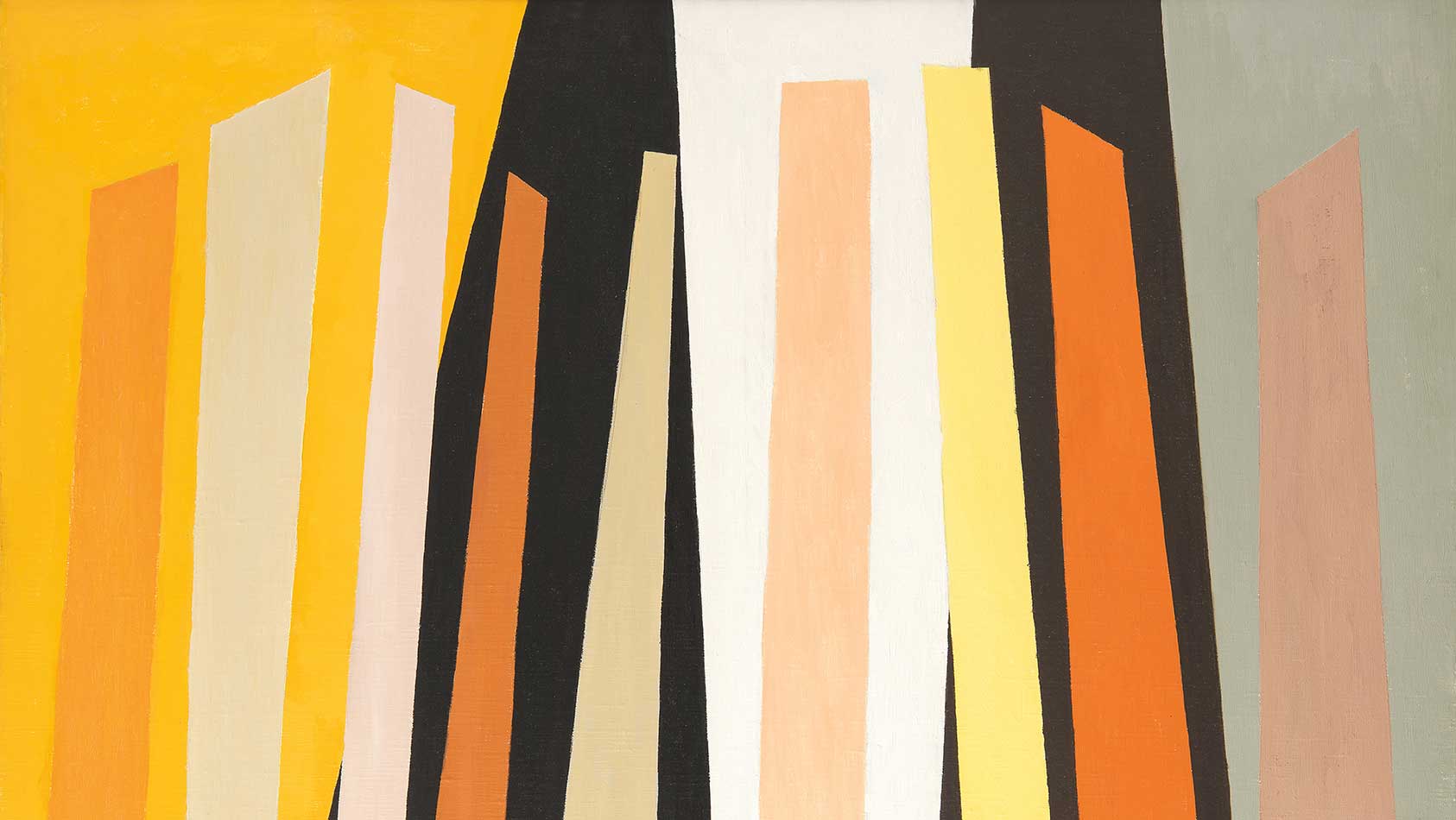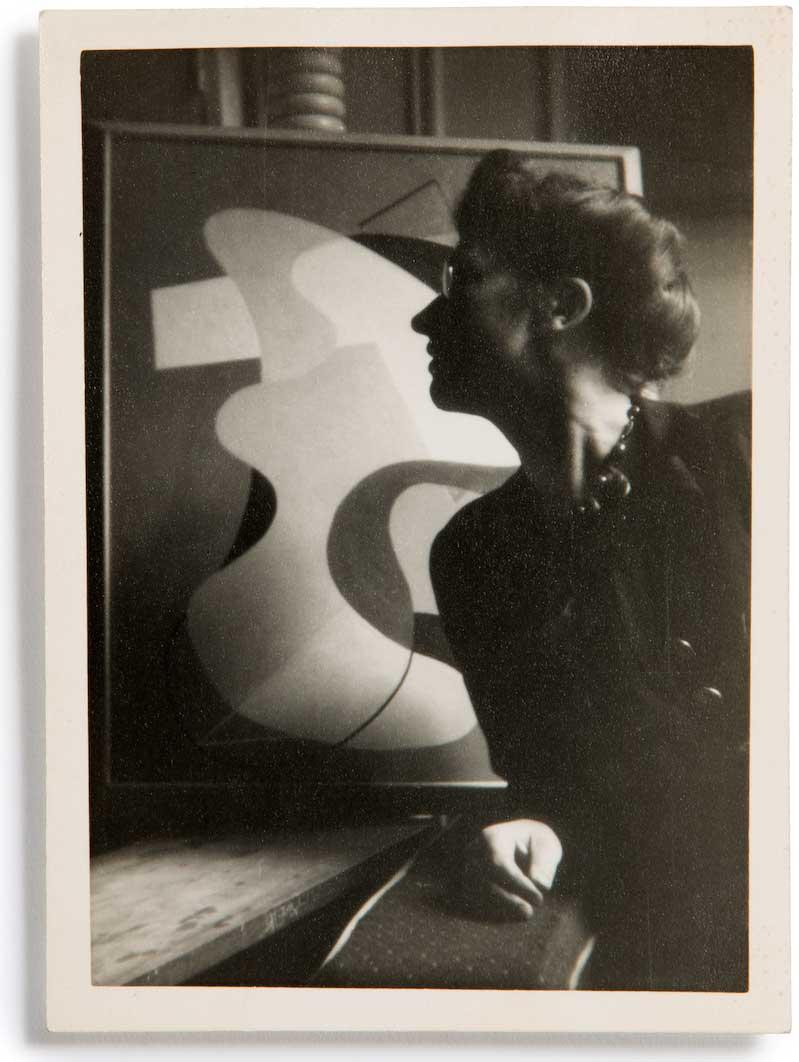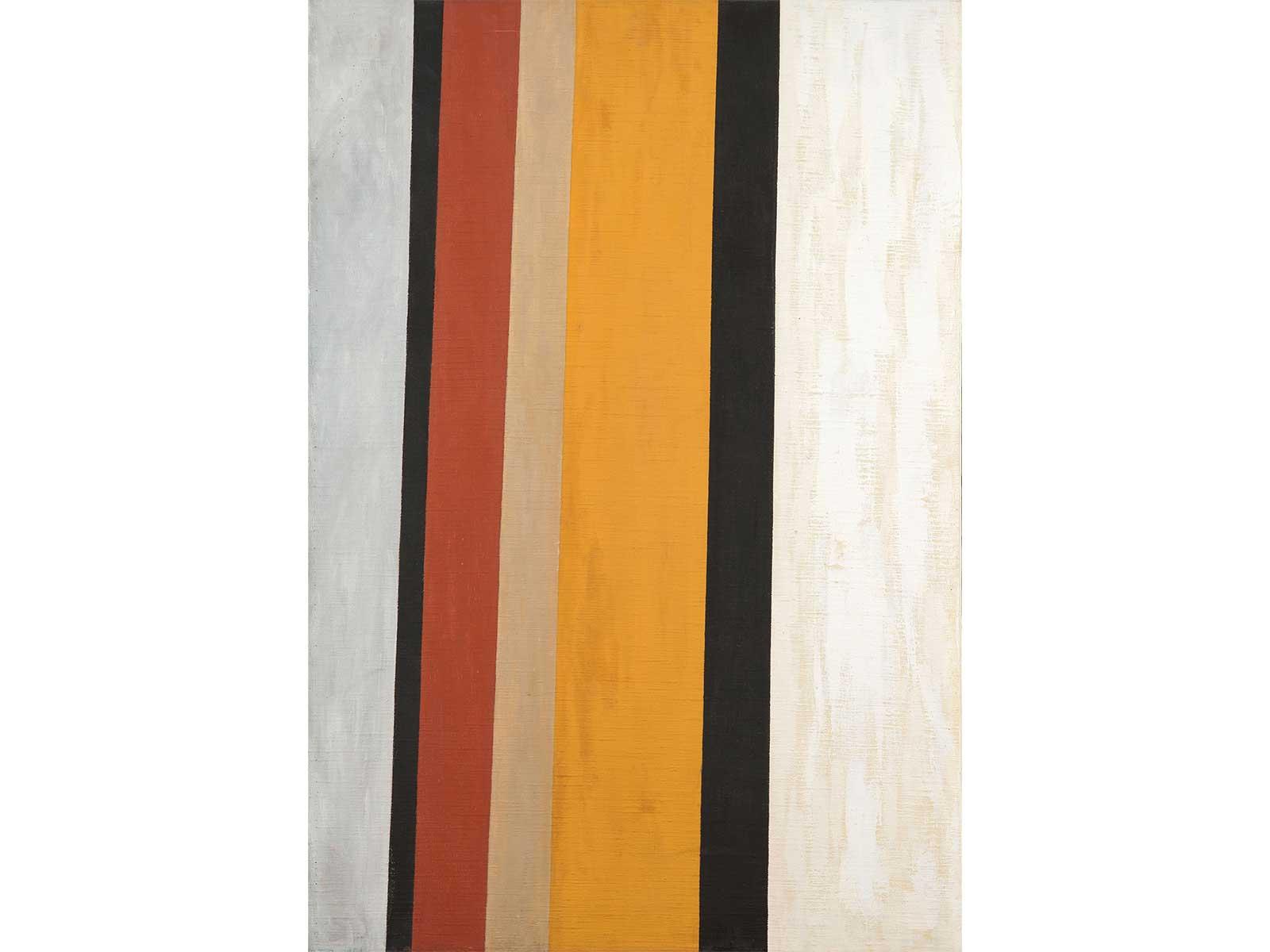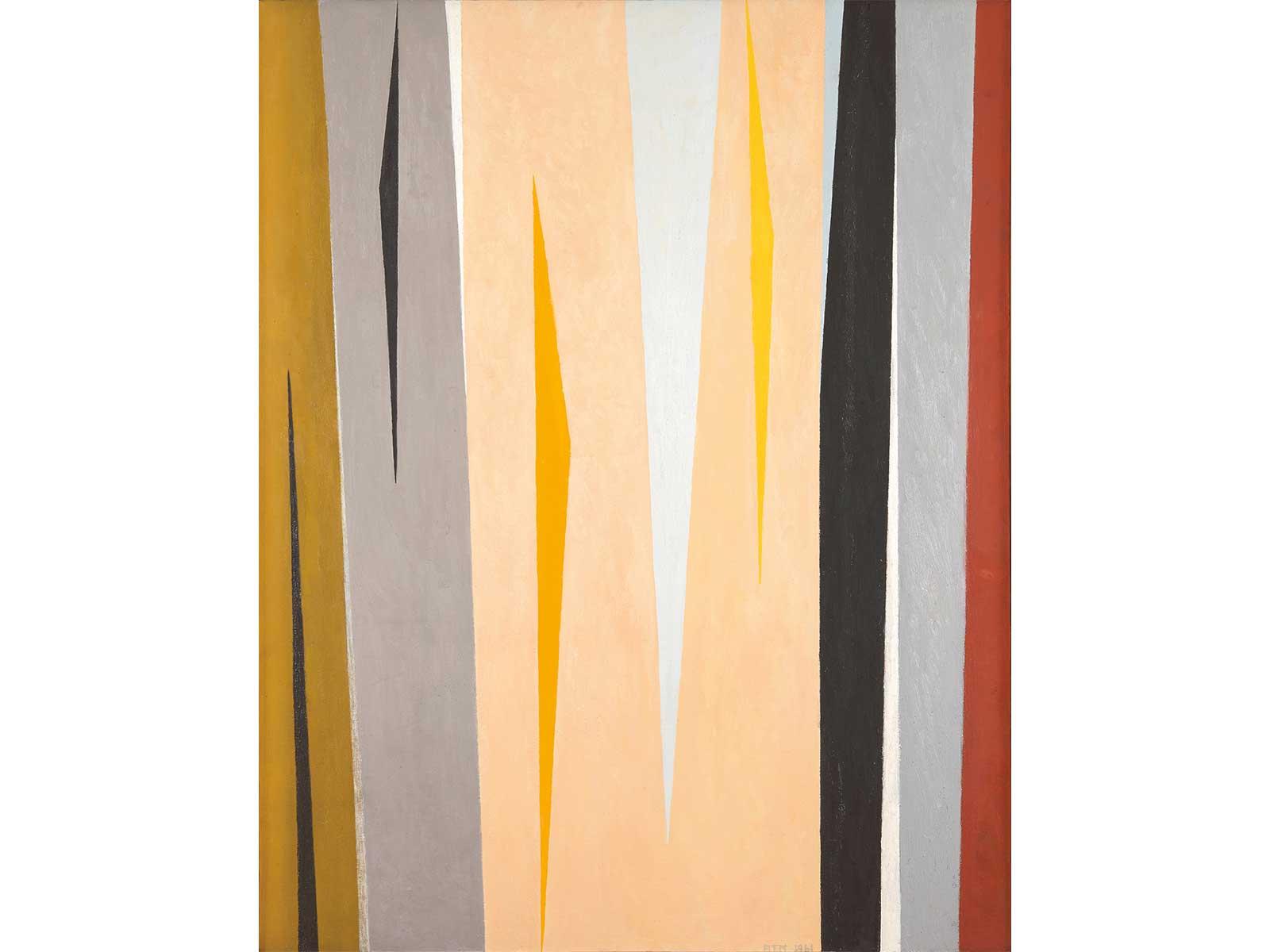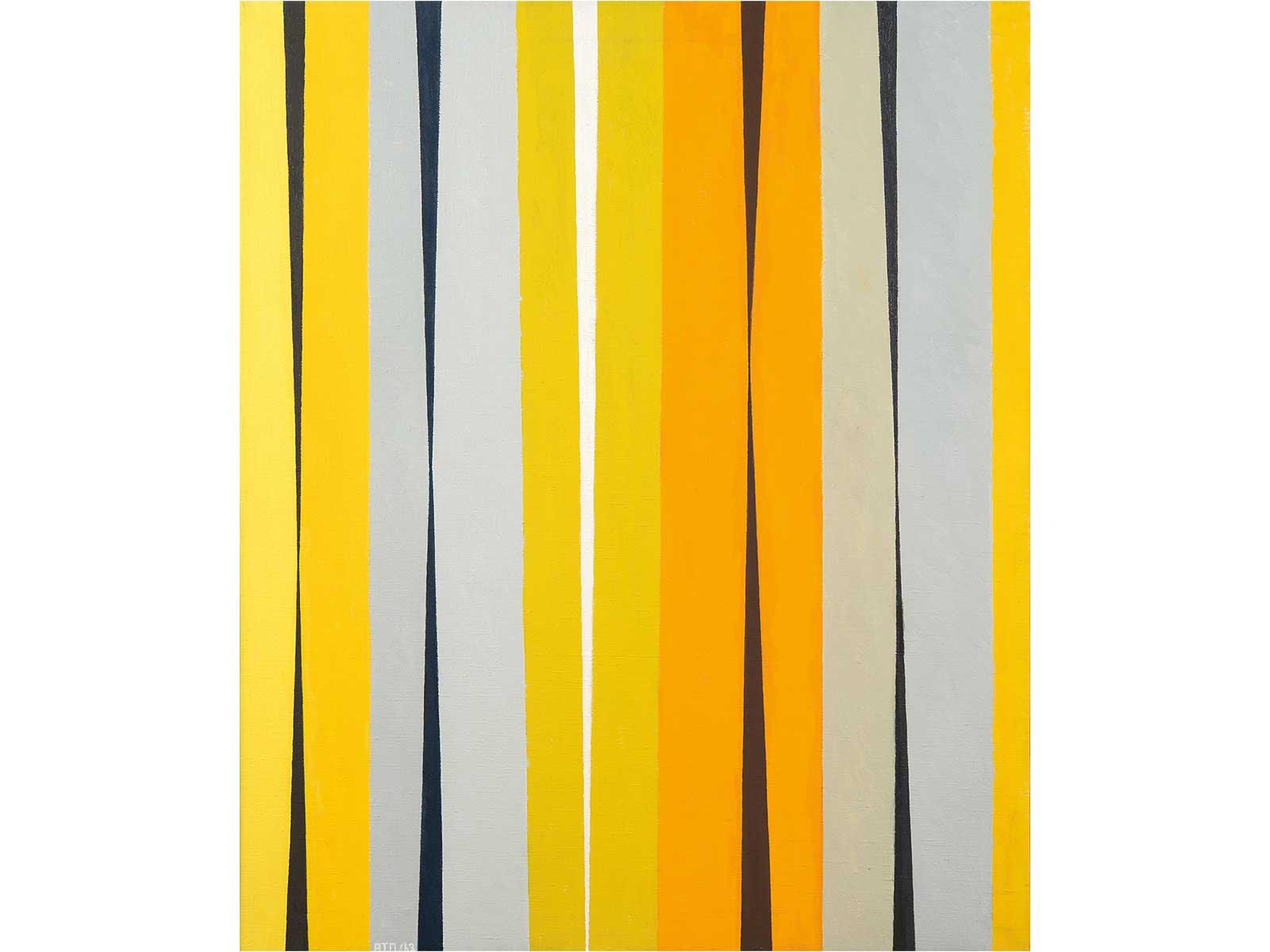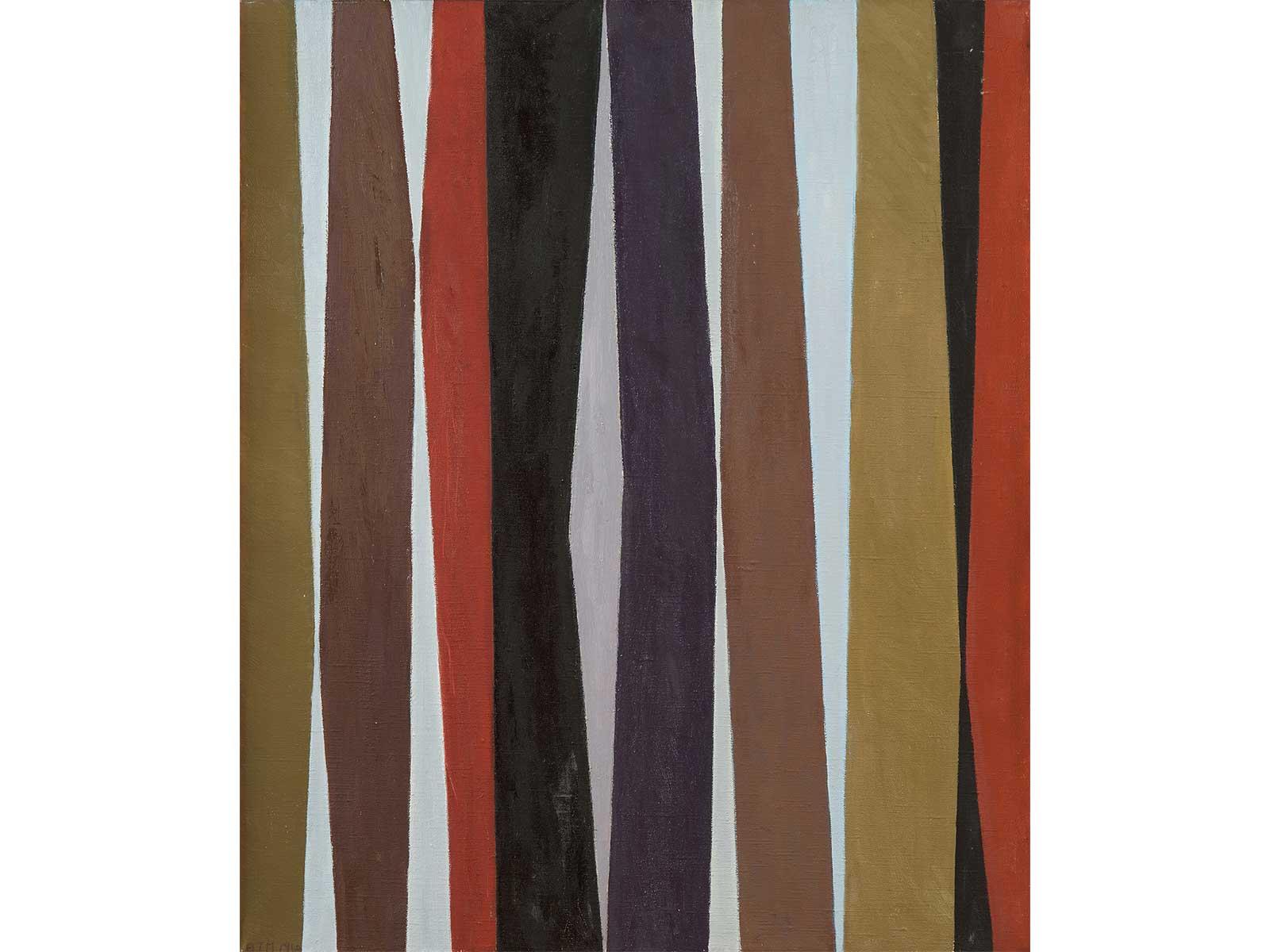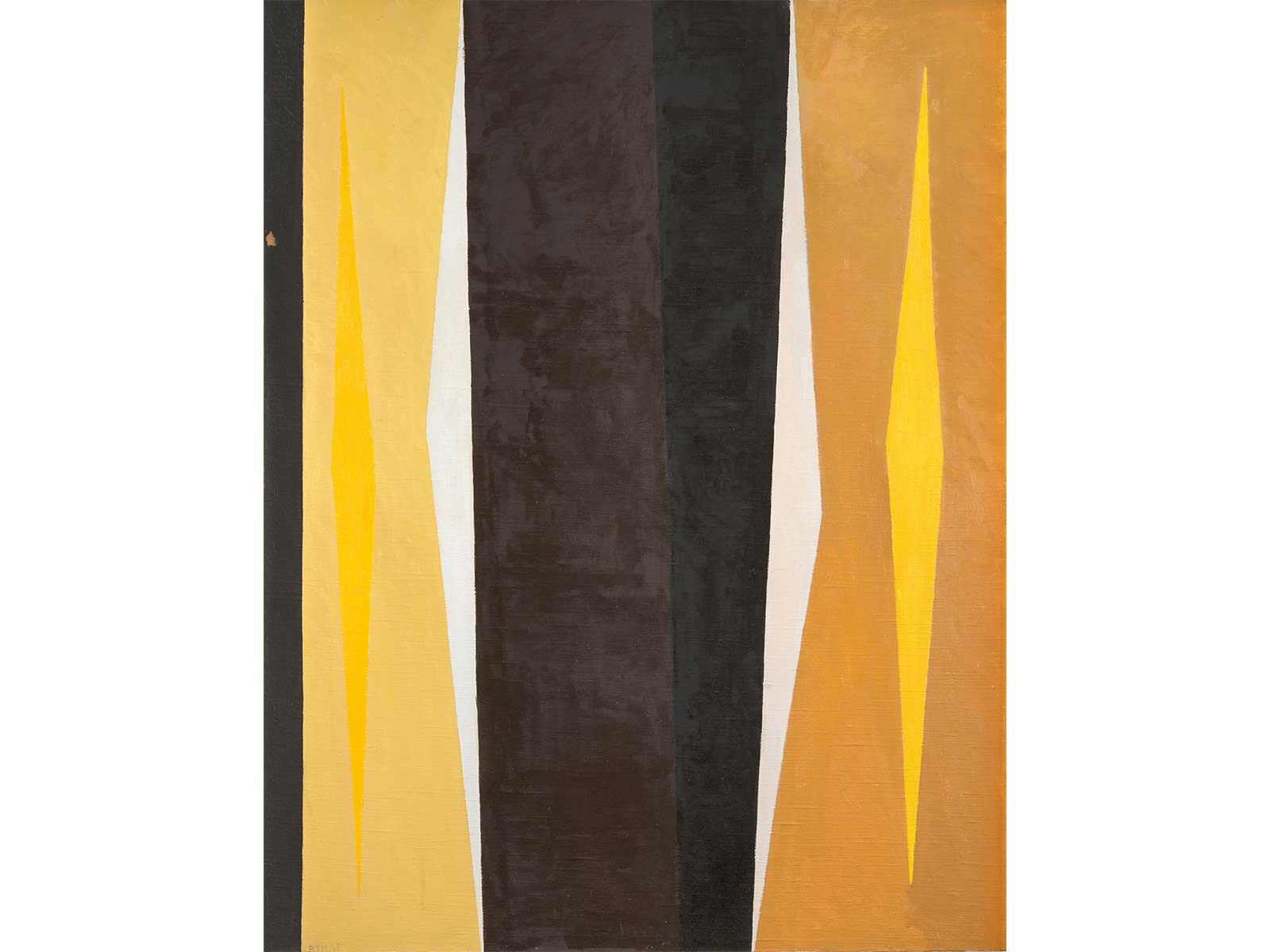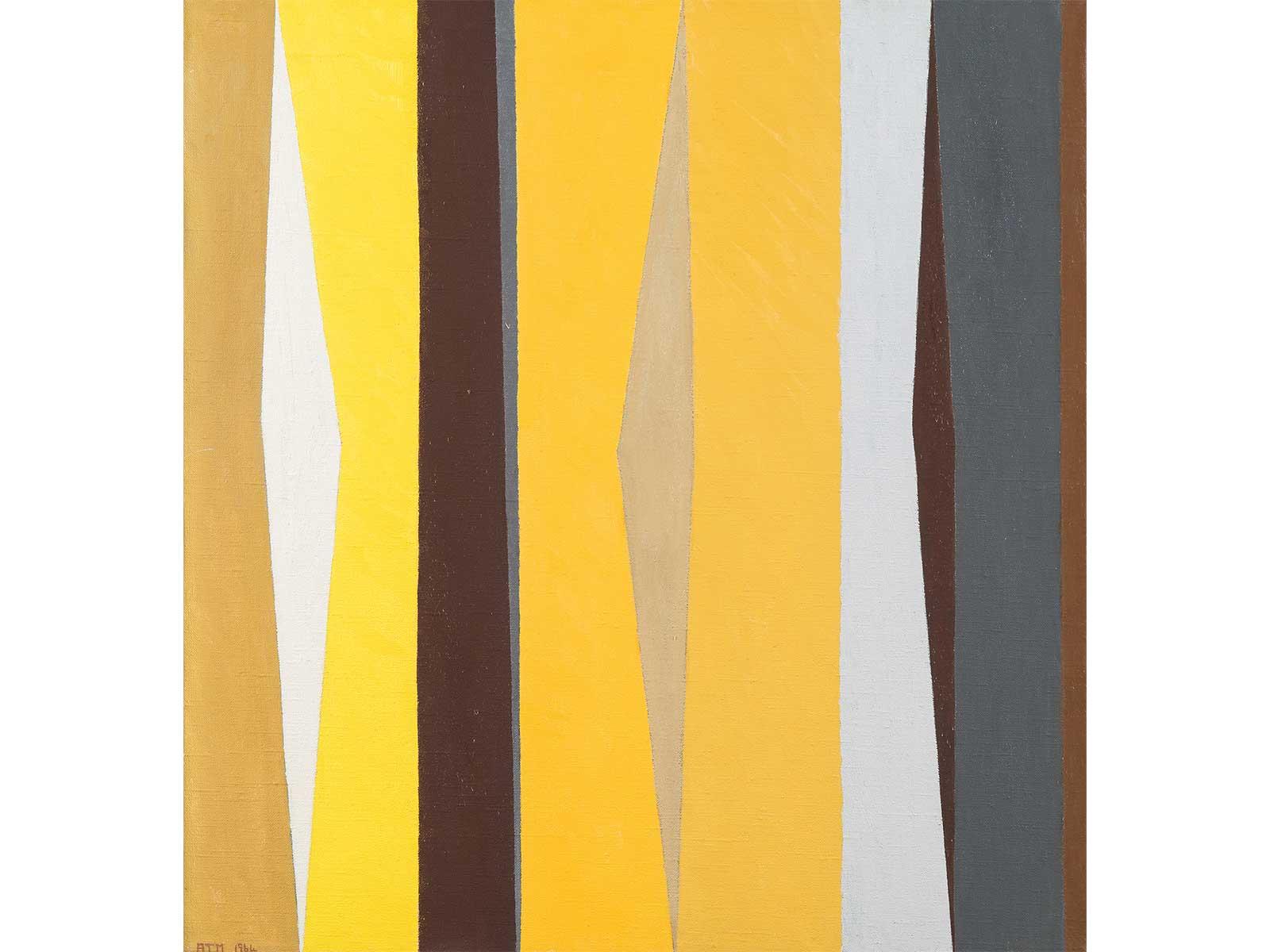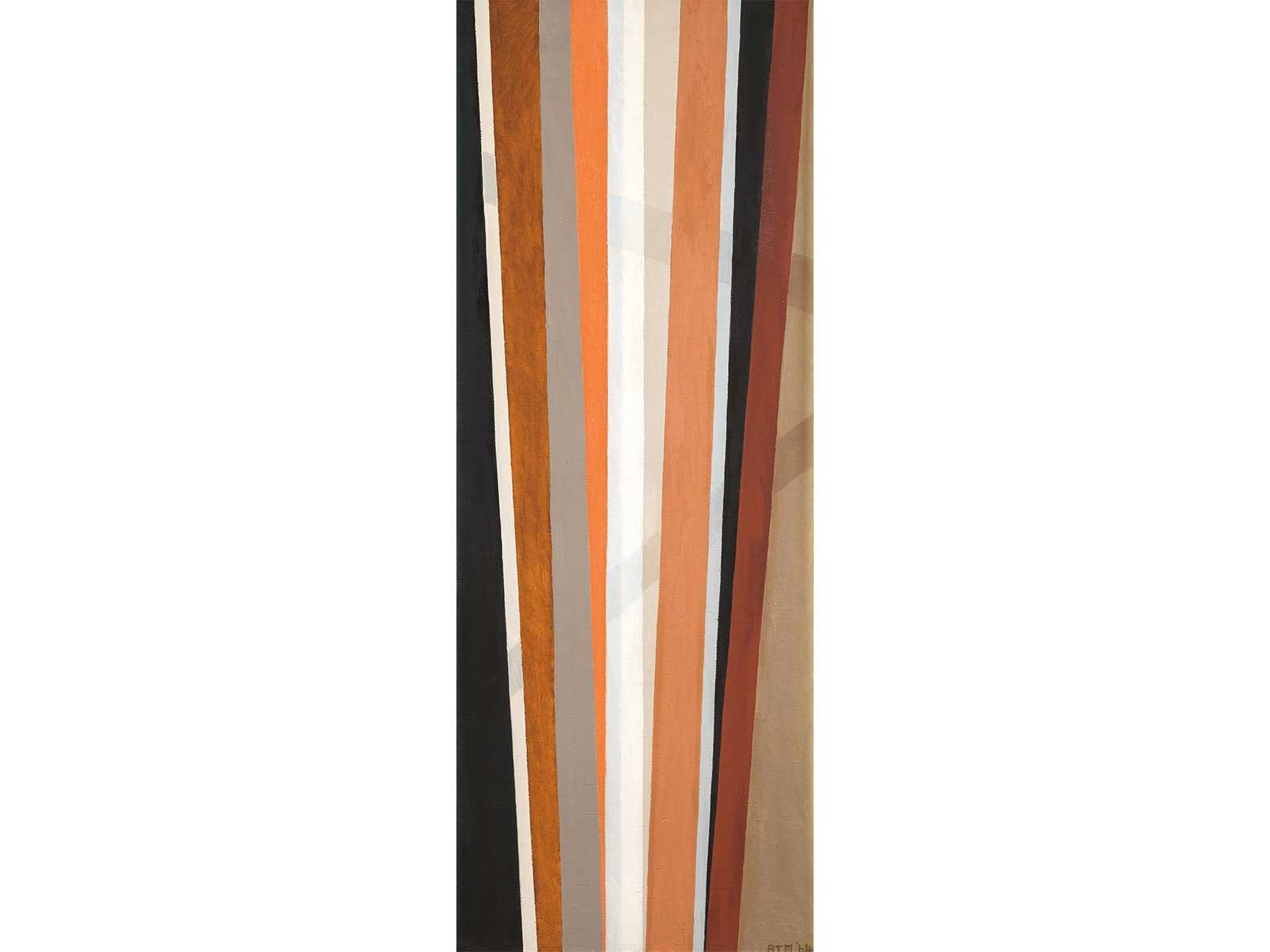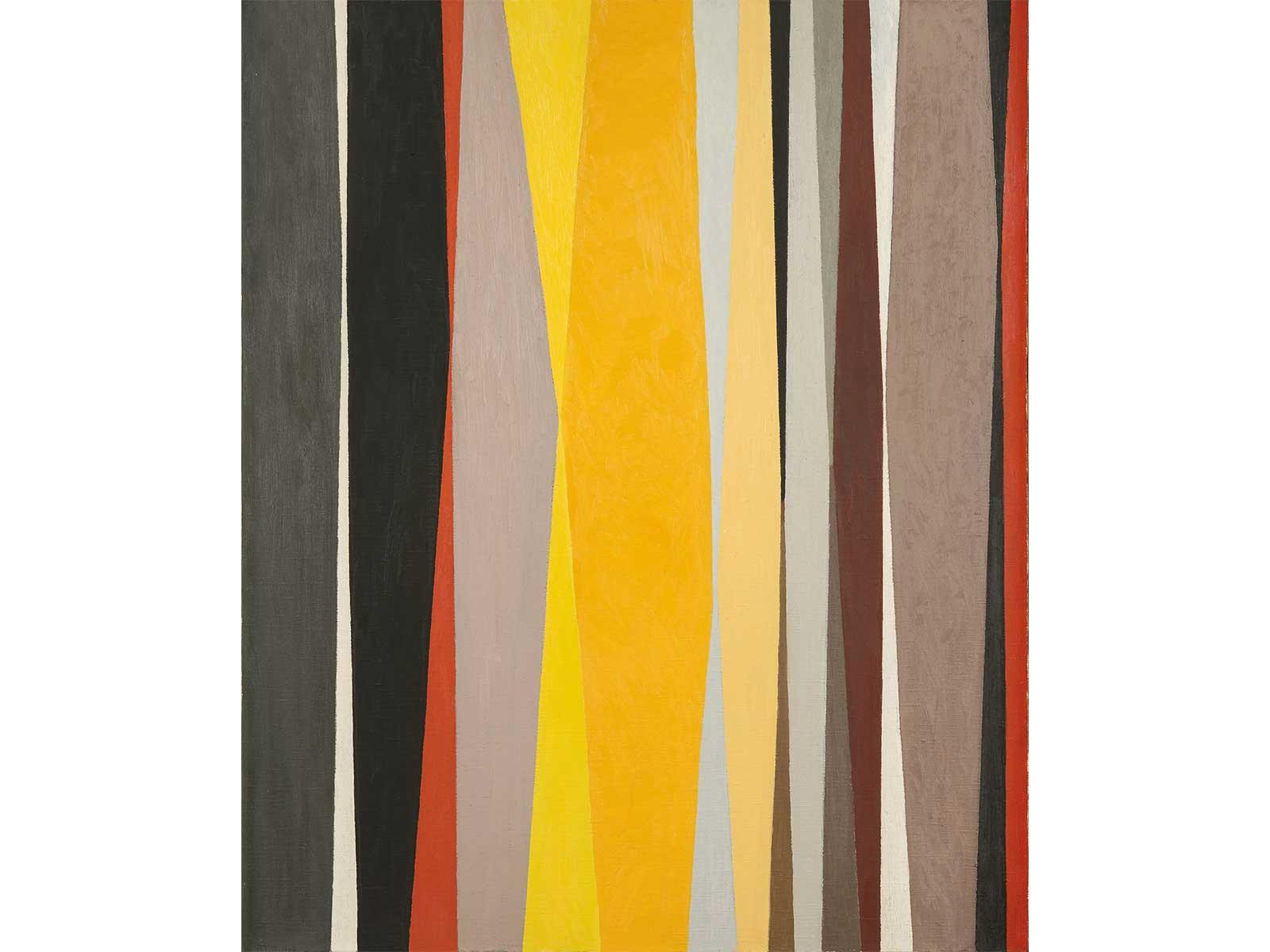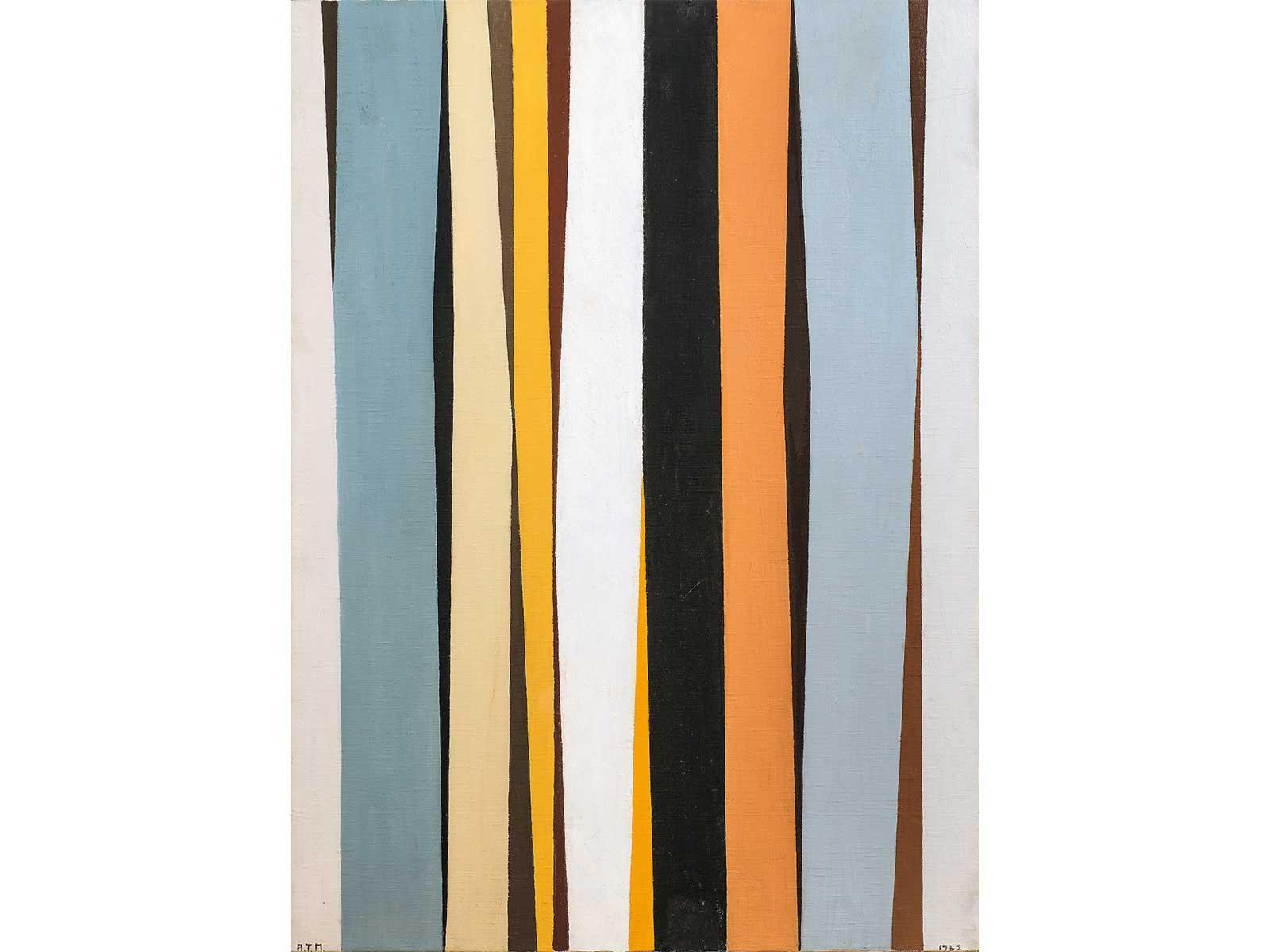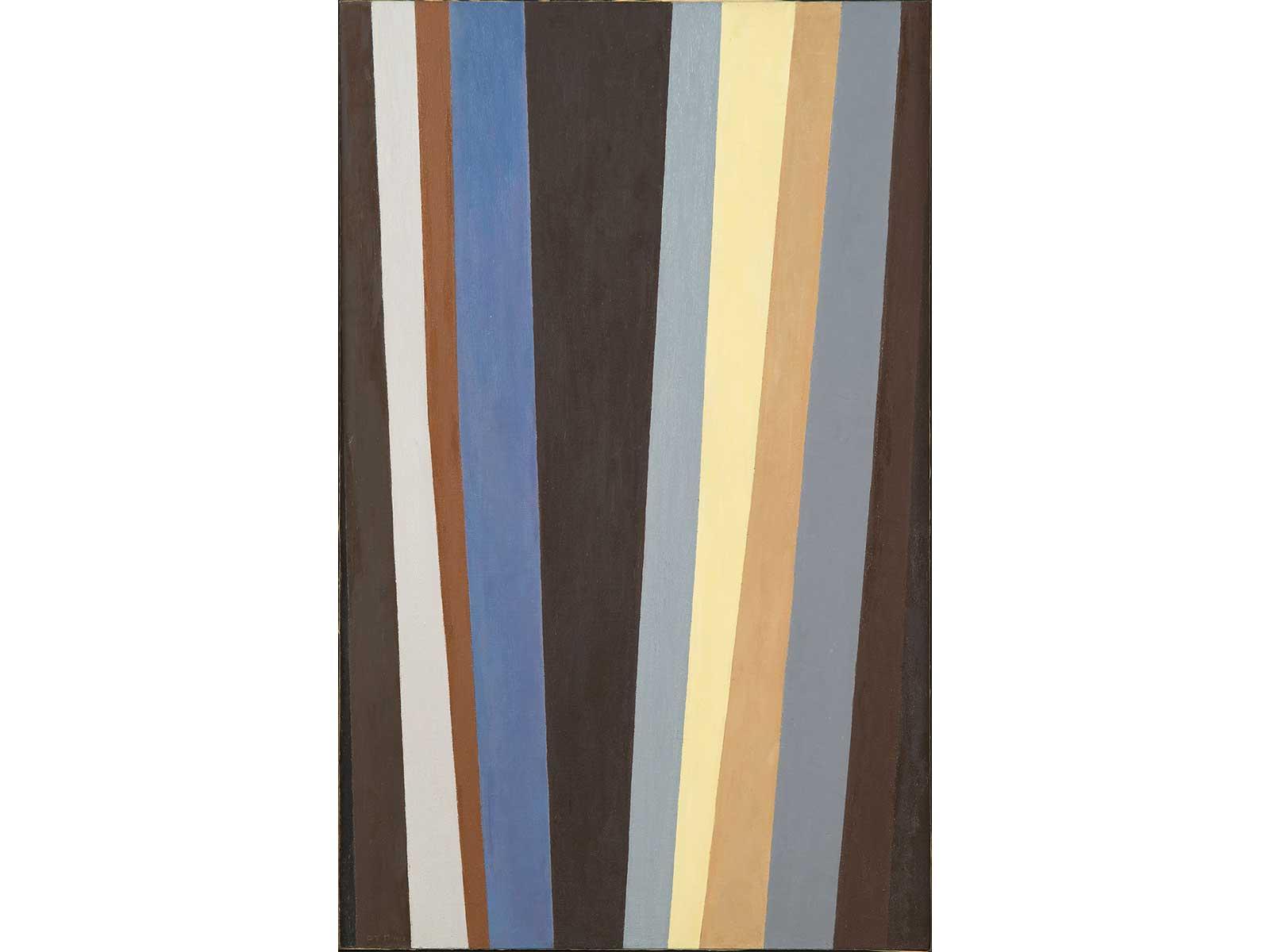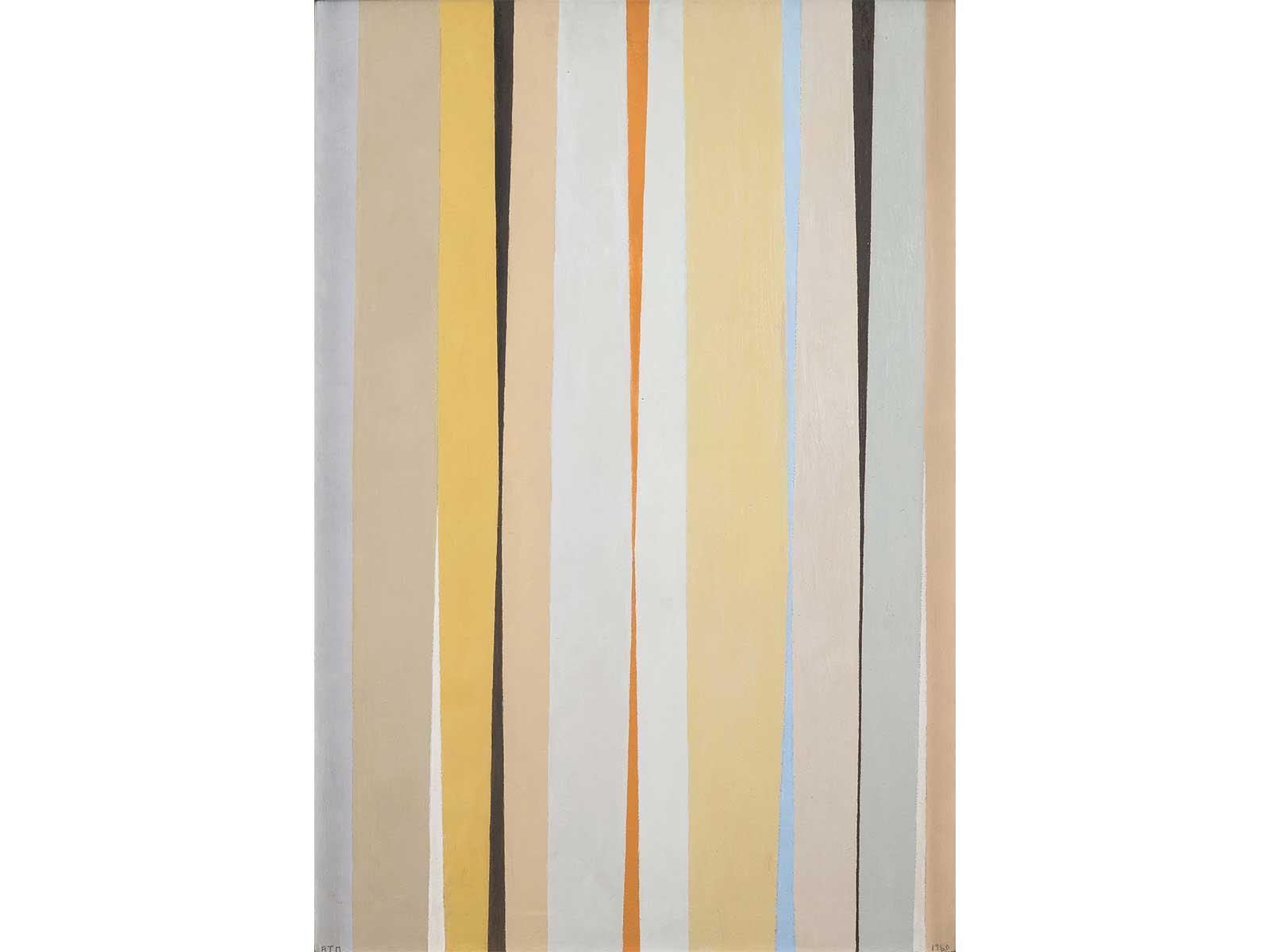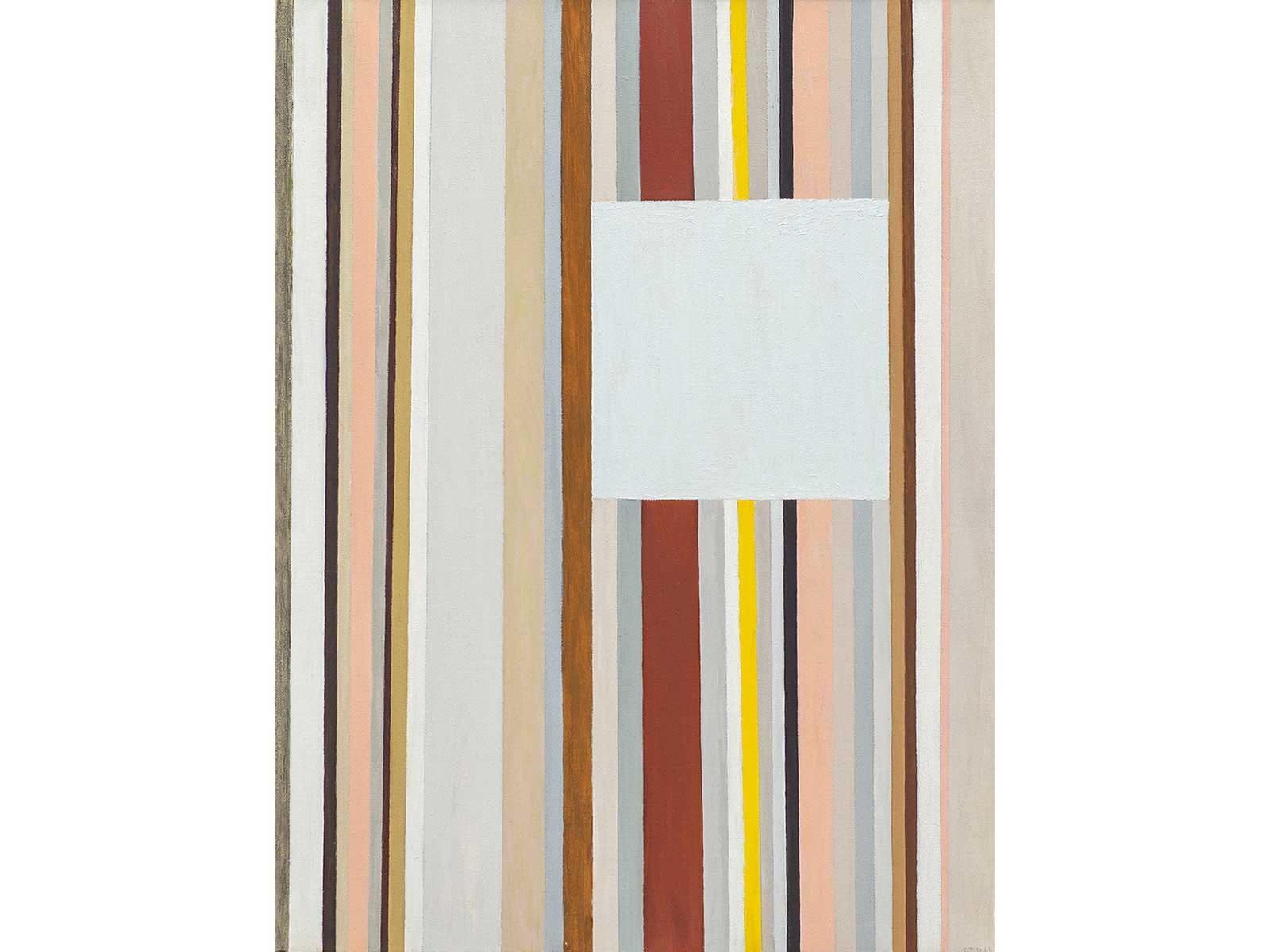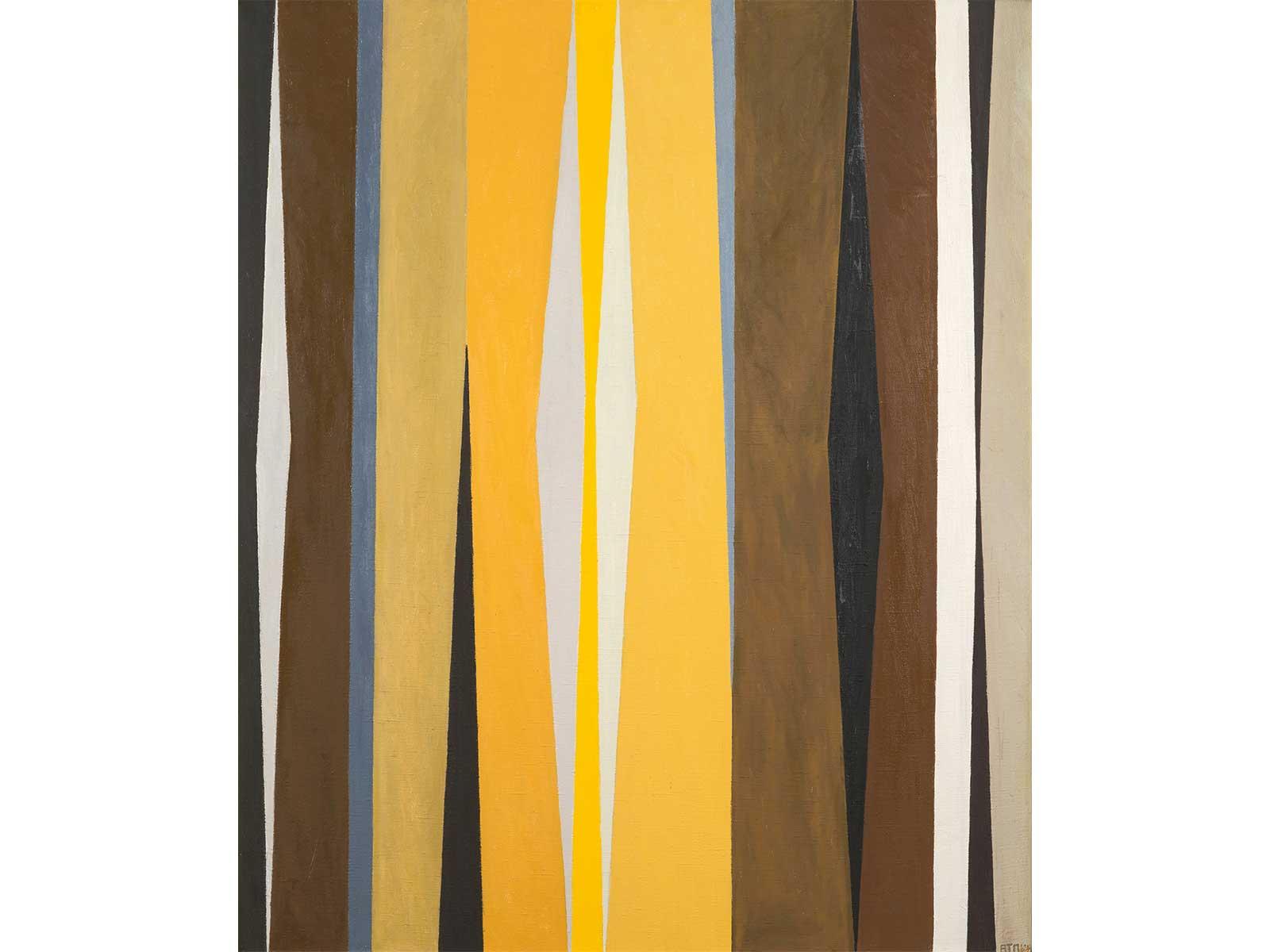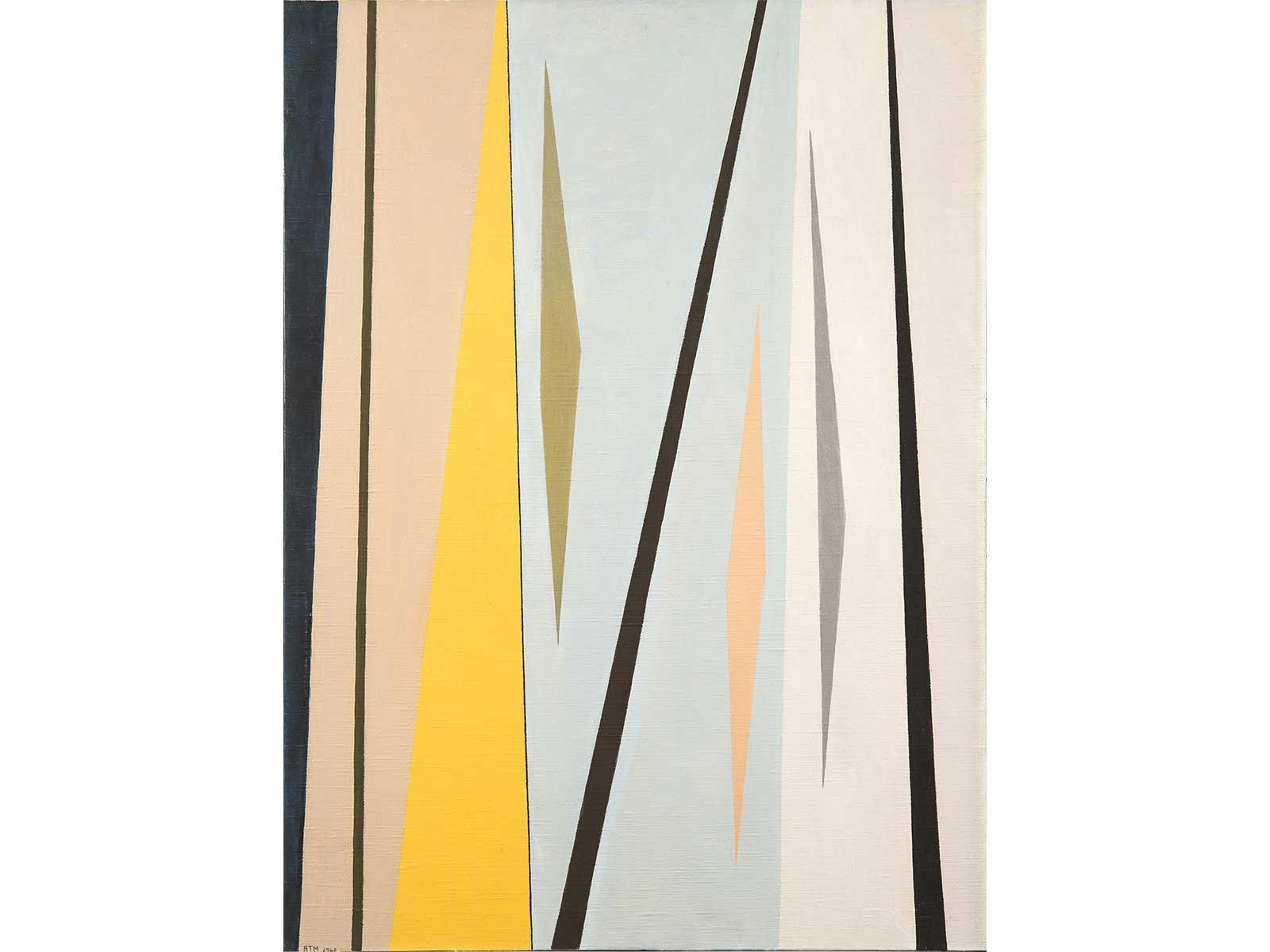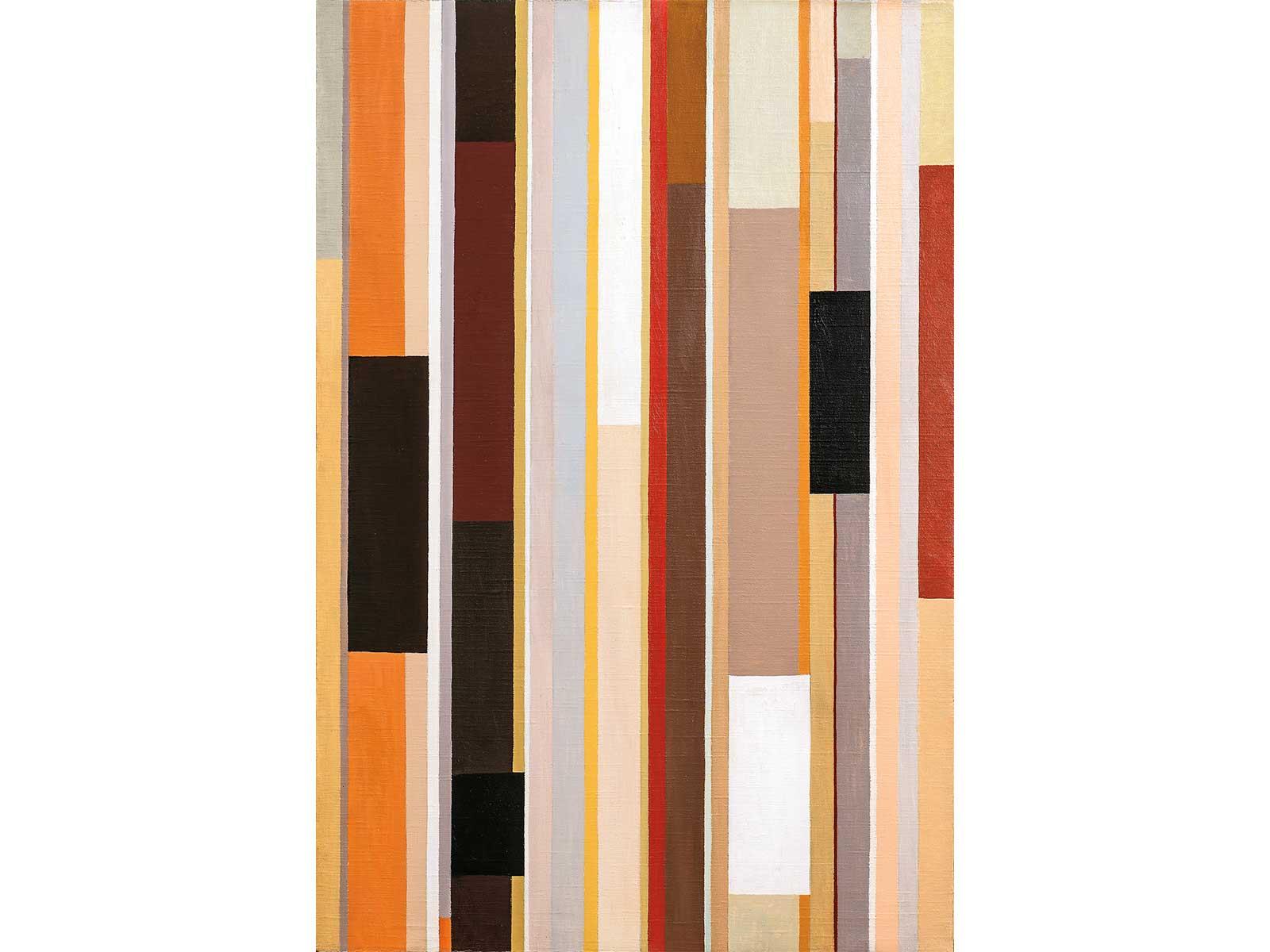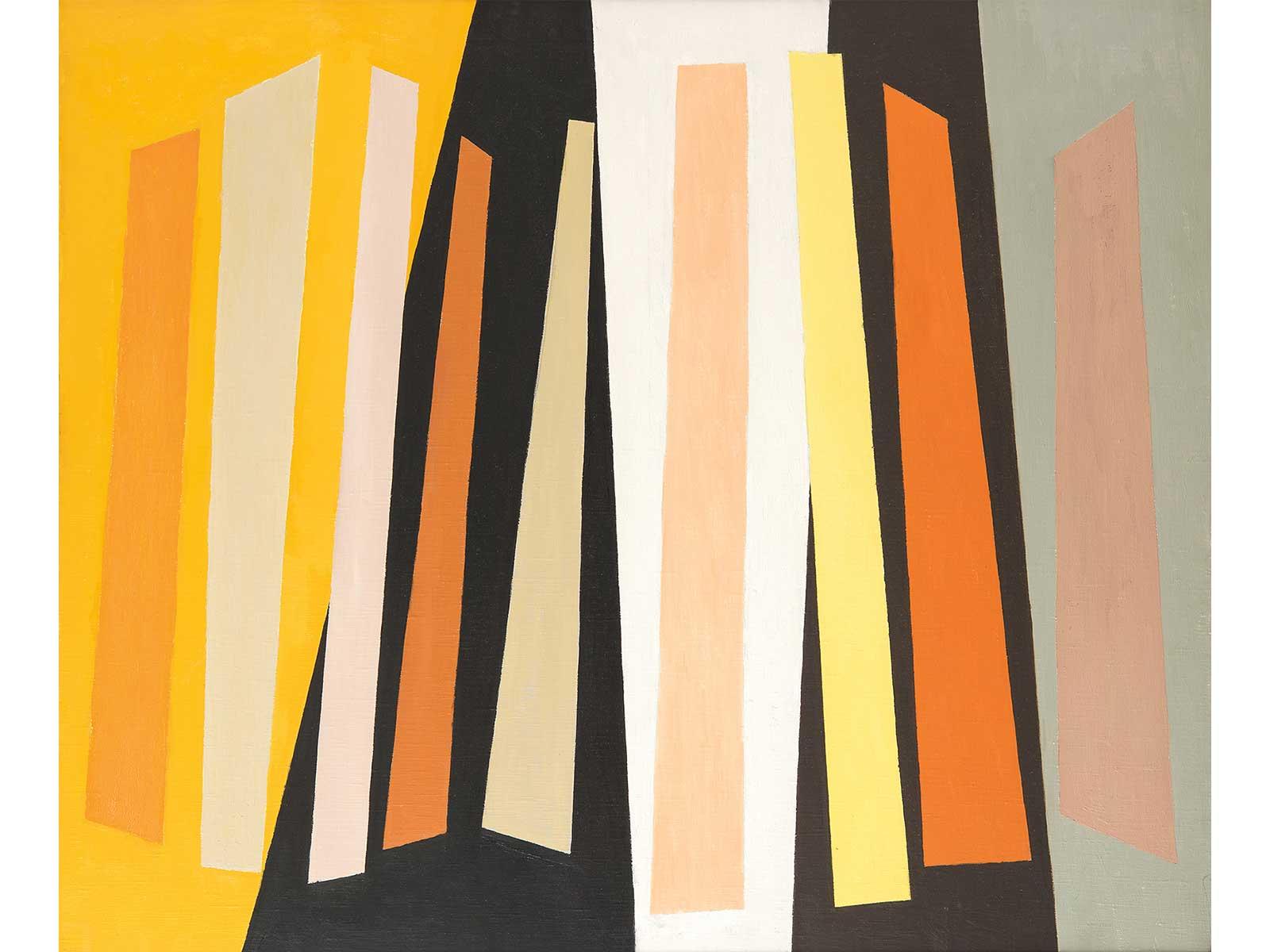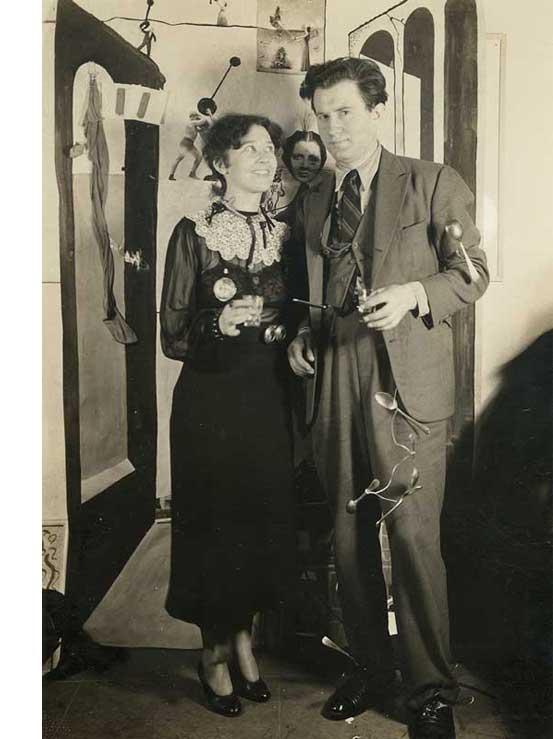In a notable revival, the life and career of the late dedicated abstractionist Alice Trumbull Mason has been guided into light through a focused exhibition of sixteen Shutter Paintings at Joan Washburn Gallery and a richly revealing book published by Rizzoli with clearly presented contributions by Mason’s daughter, the late painter Emily Mason, as well as by critics, scholars, and art historians.
Rendering abstract paintings into unexpected architectural wonders, Mason notably employed strong diagonals that appear to struggle to support adjacent structures. It would be difficult not to sense a corresponding sense of imbalance in her emotional status.
Her uncompromising style, refuting gestural Abstract Expressionism was quite unlike anybody else’s. Though her paintings evoke in many ways the clarity of geometric abstractionists, the color relations and elegant forms of the modernists, but more than anything, her Shutter Paintings are slyly active, featuring narrow apertures. The stripes appear to expand and contract, generating a sense of motion and even sexuality as triangles merge. Looking at Mason’s paintings of the 1960s, we note, above all, that everything is a little bit different from the other paintings being done, albeit clearly in communication with the modernist lingo.




